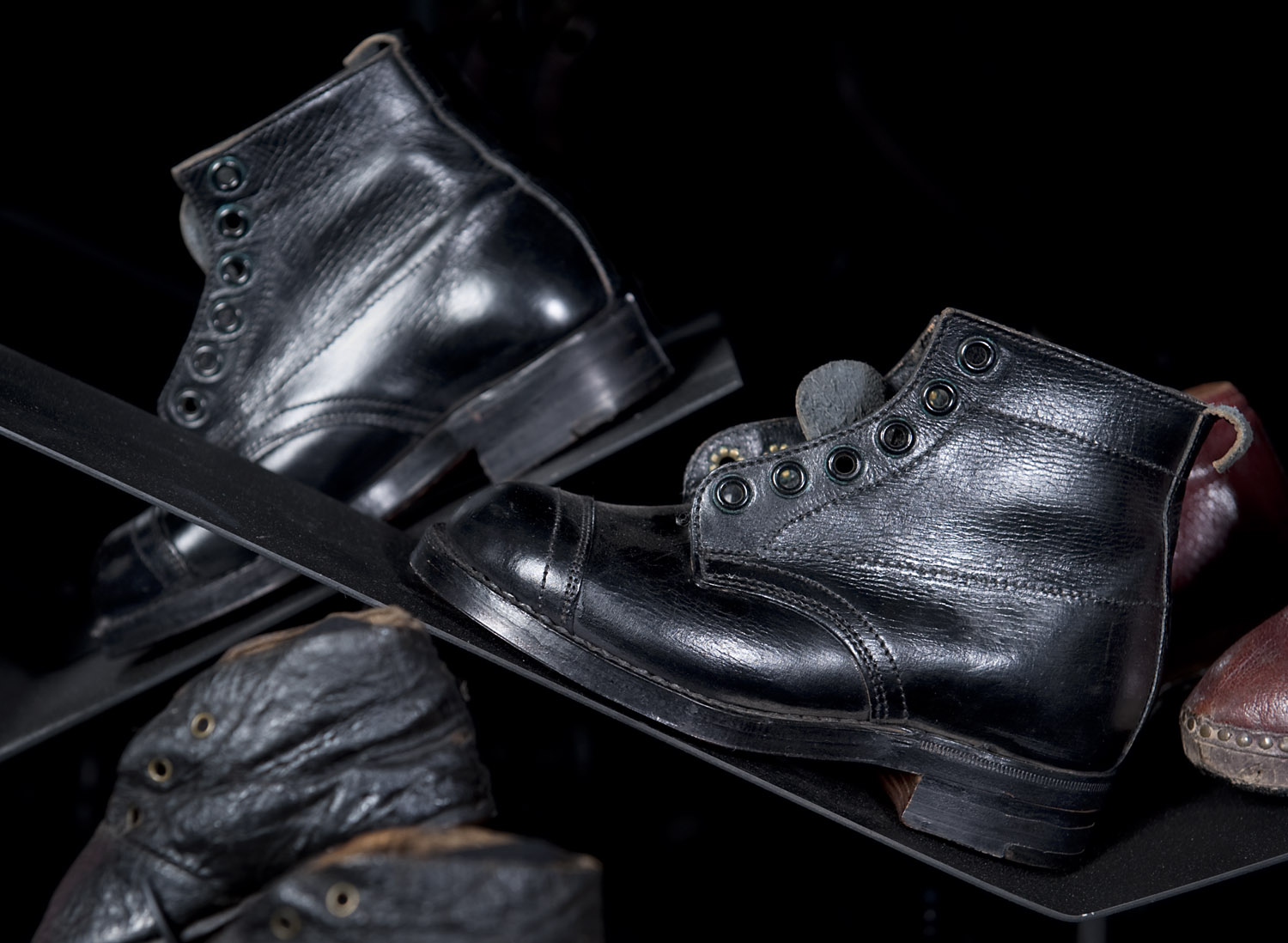Details
- Object type
boot; ankle boot
- Place Associated
Scotland, Renfrewshire, Kilmacolm, Quarrier's Home (place of association)
- Date
circa 1972
- Materials
leather
- Description
-
Child's boot, ankle boot or 'tacketty' boot, left of a pair (with E.1977.10.1.[2]) and associated box (E.1977.10.1.[3]), with black leather upper. Derby style with toe cap. Ankle-length quarters extending into latchets fastening along top edge with six pairs of eyelets over tongue and lace (now missing). Stacked leather heel. Leather sole and top piece. Size 8. Made for a child at Quarrier's Home, Kilmacolm.
‘Tacketty’ boots are heavy-duty, hardwearing lace-up boots with sturdy leather uppers with reinforced toe-caps. The thick leather sole often has metal caps and hob nails or tacks, which led to the term ‘tacketty’ deriving from these metal studs or tacks clicking on paved or cobbled urban streets. Such sturdy shoes were popular for working class men, women and children because of their durability and protection.
This is one from a pair of unworn boots that came from Quarrier's Homes for Orphans in Kilmacolm. Quarrier's Homes for Orphans were founded by William Quarrier in 1871. After the death of his father at an early age Quarrier worked in a factory before becoming apprenticed to a shoemaker, later establishing his own business by the age of 23.
William Quarrier was concerned about the numbers of children living rough in Glasgow. He first turned his attention to the shoeblack boys working in the railway stations, organising them into the Shoeblack Brigade, where they were provided with a basic education, uniforms and homes. The first home was in Renfrew Lane, Glasgow. Later several other homes opened, including the City Orphanage in James Morrison Street, Glasgow, which could accommodate 100 boys, with room for another 100 boys and girls on a temporary basis. In 1878 he opened the first of his cottages on his farm near Bridge of Weir that when finished would home 500 children. For over 100 years ‘tacketty’ boots were issued to the children housed in Quarrier’s Homes, but by the early 1970s this stopped as they were deemed to be too expensive.
- Credit Line/Donor
Gifted, 1977
- ID Number
E.1977.10.1.[1]
- Location
Riverside Museum Main Exhibition Area
